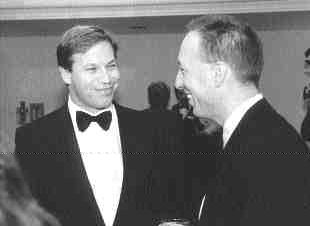Joint-venture partners
Drilling south of the Boston deposit increased the measured and indicated resource for that deposit to 1.4 million tonnes grading 15.4 grams gold per tonne. Boston, which is made up of four zones, B-2, B-3, and B-4, has an additional inferred resource of 2.6 million tonnes grading 10.9 grams. Although some resources moved from inferred into indicated resources in the new calculation, roughly the same amount of new mineralization was added to the inferred resource.
At Madrid, the indicated resource stands at 1.1 million tonnes running 10.3 grams. Two new discoveries in the Madrid area, the Naartok and Suluk zones, bumped the deposit’s inferred resource to 2.5 million tonnes at a grade of 11.8 grams per tonne, over and above the measured and indicated figure. The last resource estimate on Madrid showed 328,000 tonnes grading 7.3 grams gold per tonne in the measured and indicated categories, plus 744,000 tonnes of inferred mineralization running 9.3 grams.
Naartok, discovered in 2000, was tested with a 62-hole drill program in the recent field season. The 300-metre-long zone has been traced to 250 metres of depth and is open in both directions along strike, as well as at depth. Further drilling is planned. There will be more drilling on Suluk, which lies beneath a lake, in the early part of the year, when drills can be put on the ice.
Some indicated resources at the Doris deposit were downgraded into the inferred category, reflecting ongoing economic studies on the deposit’s Hinge zone. The indicated resource at Doris is now 887,000 tonnes grading 21.5 grams gold per tonne, down from 1.1 million tonnes grading 18.9 grams. Doris’s additional inferred resource is 1.7 million tonnes grading 15 grams, an increase from 1.3 million tonnes grading 17.7 grams.
The Hinge zone, which sports an indicated resource of 215,000 tonnes at 29 grams gold per tonne and additional inferred resources of 79,000 tonnes grading 37 grams, is the subject of a preliminary economic assessment, concentrating on the possibility of developing the zone on its own. The zone is near the surface, and its higher grade holds out the possibility that its early development might provide initial cash flow to develop other parts of the project.
The partners are examining the feasibility of mining the Hinge zone, at a 600-tonne daily rate, for about two years. The mining plan would start with an open pit, to be followed by underground bench-and-fill or room-and-pillar mining below the pit. The operation would use a modular mill that could be transported to the mine site.
Miramar and Hope Bay expect to see results of the studies in February.


Be the first to comment on "Hope Bay partners increase resource (January 21, 2002)"